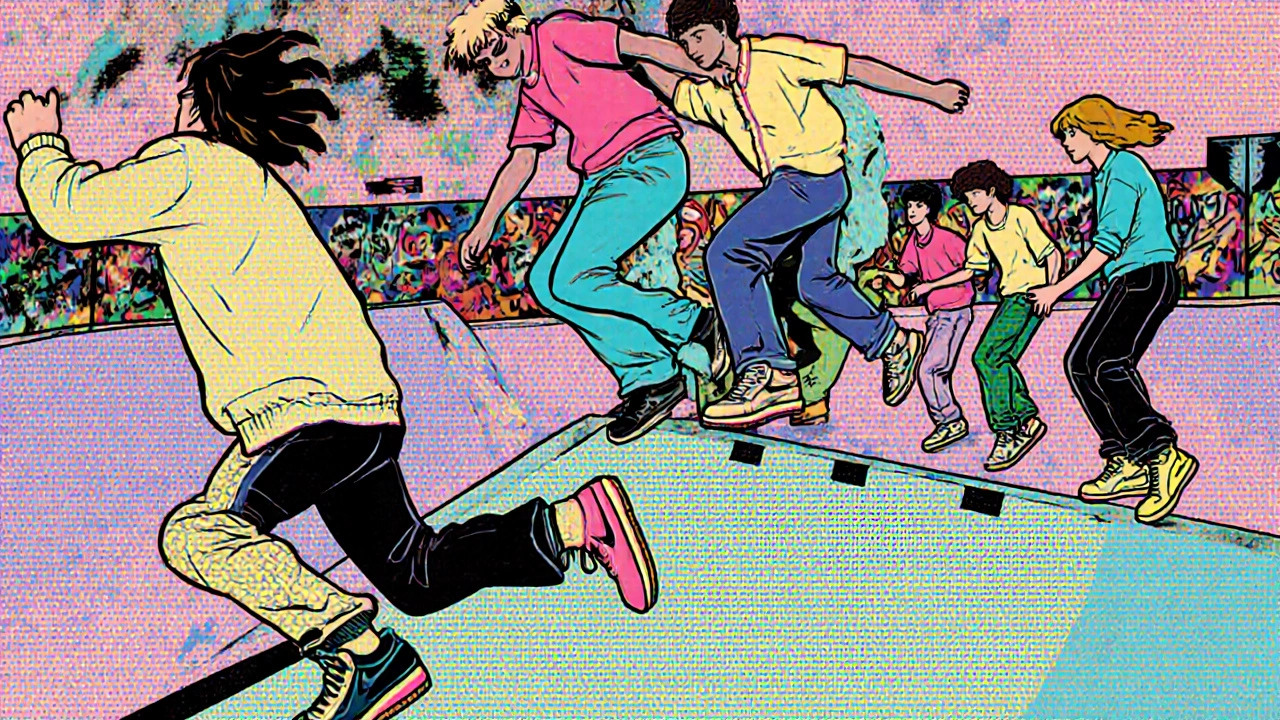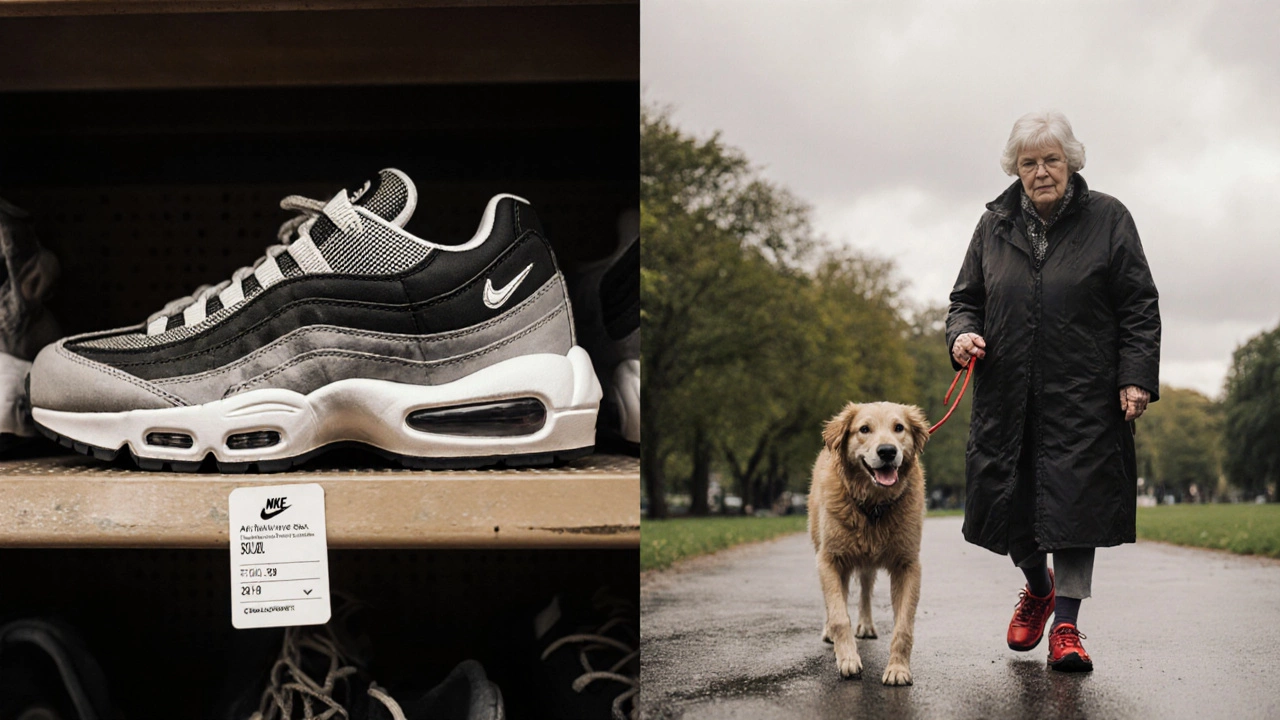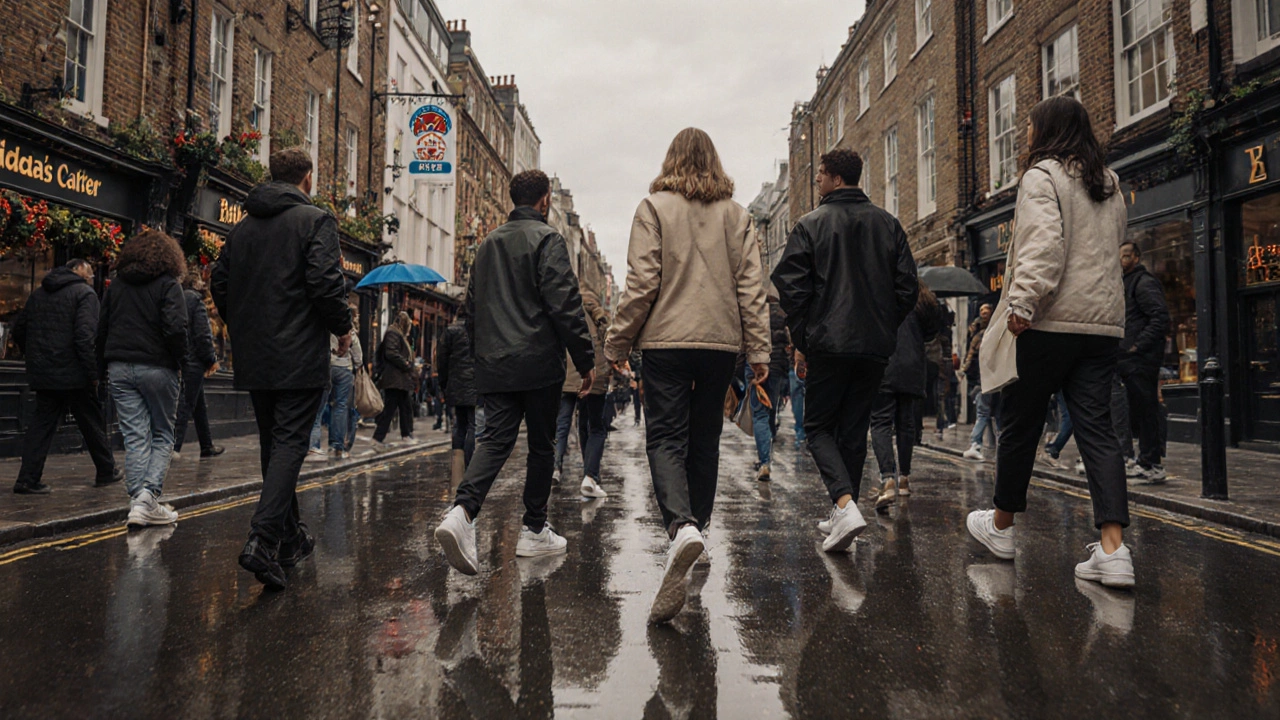UK Footwear Terminology Tool
Know Your Footwear in England
This tool clarifies UK/US terminology differences for everyday footwear. Type a term to see the British equivalent.
Footwear Comparison Guide
| UK Term | US Term | Description | When to Wear |
|---|---|---|---|
| Trainers | Sneakers | Comfortable rubber-soled shoes for casual wear and light activity | Everyday wear, school, shopping, casual outings |
| Shoes | Formal shoes | Leather or formal footwear for work or special occasions | Work, weddings, formal events, job interviews |
| Plimsolls | Canvas shoes | Simple canvas shoes with thin rubber soles (older style) | Basic casual wear, school (especially older generations) |
| Boots | Boots | Higher shoes covering ankle, often for weather protection | Wet weather, outdoor activities, work (e.g., Doc Martens) |
Key Takeaways
-
1
"Trainers" always means shoes (not people) in plural form
-
2
Plimsolls are the old-school, basic canvas versions of trainers
-
3
You can't wear trainers to formal events like weddings or in conservative workplaces
In England, when someone says "trainers," they don’t mean someone who coaches a team or runs a gym. They mean the exact same thing you’d call "sneakers" in the U.S. or "athletic shoes" elsewhere. It’s one of those small language differences that trips up visitors - and even some Brits abroad. If you’re in London, Manchester, or Birmingham and hear someone say, "I need new trainers," they’re not looking for a personal fitness instructor. They’re heading to the store to buy running shoes, basketball shoes, or just a comfy pair to walk around in.
Why Do Brits Call Them Trainers?
The word "trainers" comes from the 19th century, when these shoes were first designed for athletes to train in. Back then, they were simple rubber-soled shoes worn by rowers and runners to grip the ground better. The term stuck because these shoes were literally used for training - not for formal events, not for work, just for physical activity. Over time, the name outlasted the original purpose. Today, you can wear trainers to the supermarket, to school, or to a night out. But the name? Still "trainers."
Unlike in the U.S., where "sneakers" became popular because the rubber soles let you move quietly ("sneak" around), the British kept it practical. It’s not about stealth. It’s about function. The shoes were made for training. So they stayed trainers.
Trainees vs. Trainers: Avoiding the Confusion
If you’re new to British English, you might hear "trainer" and think of a person - like a personal trainer or a sports coach. That’s correct too. The same word has two meanings. But context clears it up every time. If someone says, "I’m going to buy some trainers," they’re talking about shoes. If they say, "My trainer got me into HIIT," they’re talking about a person. The plural form "trainers" almost always means footwear. The singular "trainer" can mean either, but in casual speech, it’s more often the person.
What Do English Trainers Look Like?
British trainers aren’t a specific style. They’re a category. You’ll see everything from classic white canvas sneakers like Converse Chuck Taylors to high-tech running shoes from Nike, Adidas, or New Balance. But there’s a cultural preference. Brits tend to favor understated designs. You won’t see as many neon-colored, logo-heavy pairs as you would in the U.S. or Asia. Instead, you’ll notice a lot of neutral tones - black, grey, white, navy. Minimal branding. Clean lines.
Brands like Clarks, ECCO, and Skechers are common for everyday wear. For sporty looks, Adidas Superstars and Nike Air Max are everywhere. But the real UK staple? The classic Reebok Classic Leather. It’s been a favorite since the 80s and still shows up on the streets of Bristol, Leeds, and Glasgow. Even in 2025, you’ll spot them on teenagers, office workers, and grandparents.

How Are Trainers Different From Other Footwear in the UK?
In England, shoes are categorized by use. Trainers are for casual, active, or comfortable wear. They’re not for formal events. You wouldn’t wear trainers to a wedding, a job interview, or a fancy restaurant - unless you’re in a very relaxed setting, like a pub with friends.
Compare that to:
- Shoes - usually leather, closed-toe, for work or formal occasions
- Boots - for weather, work, or style (like Doc Martens, which are technically boots but often worn like trainers)
- Slippers - indoor-only, soft-soled, not for walking outside
- Plimsolls - a British term for lightweight canvas shoes, often used interchangeably with trainers, but traditionally more basic
Plimsolls are the old-school version of trainers. They’re thinner, less cushioned, and often have a rubber toe cap. Many people over 50 still call their childhood shoes "plimsolls," even if they’re technically trainers now. It’s a generational thing.
Where Do People Buy Trainers in England?
You can find trainers everywhere. High street chains like JD Sports, Foot Locker, and Size? have massive sections dedicated to them. Supermarkets like Tesco and Sainsbury’s sell basic pairs for under £20. But the real action is in the independent sneaker shops - especially in cities like London, Manchester, and Bristol. Places like The Hut in Camden or Sneakerhead in Leeds carry limited editions, retro releases, and rare collaborations.
Online shopping is huge. Amazon, ASOS, and Zalando ship trainers nationwide. But many Brits still prefer to try shoes on in person. Fit matters. A bad pair of trainers can ruin a day. So even with free returns, people walk into stores, test the cushioning, and ask for recommendations.
Why Do Trainers Matter in British Culture?
Trainers aren’t just shoes in England. They’re part of identity. In the 1980s and 90s, certain brands became tied to youth subcultures. Adidas Superstars? Linked to hip-hop and streetwear. Nike Air Jordans? A status symbol in urban areas. Reebok Pump? A tech marvel that turned heads. Even today, the brand you wear says something - about your age, your style, your neighborhood.
There’s also a strong secondhand market. Thrift stores and platforms like Vinted and Depop are full of vintage trainers. A pair of 1990s Nike Air Max 95 in good condition can sell for more than a new pair. Collecting and reselling trainers is a real hobby - and sometimes a side income - for teens and young adults.
And don’t forget the weather. England doesn’t get a lot of sunshine, but when it does, people rush outside. Trainers are the go-to because they’re easy to slip on, dry quickly, and handle wet pavements better than leather shoes. They’re practical. And in a country where rain is part of daily life, practicality wins.

Are Trainers the Same in Scotland, Wales, and Northern Ireland?
Yes. The term "trainers" is used across the whole of the UK. There are no regional variations in the word itself. You won’t hear someone in Cardiff say "sneakers" or someone in Belfast say "gym shoes." It’s universally "trainers."
But style preferences can vary slightly. In Scotland, you’ll see more outdoor brands like Merrell or Salomon, especially in rural areas. In Northern Ireland, football (soccer) culture means a lot of people wear team-branded trainers - like Manchester United or Liverpool. In Wales, there’s a strong love for classic British brands like Clarks and Dr. Martens, even when they’re worn as casual footwear.
What’s the Future of Trainers in England?
Sustainability is changing the game. Brands like Veja, Allbirds, and Adidas (with its Parley line) are gaining traction. People are asking: "Are these made from recycled plastic?" "Are they repairable?" "Will they last five years?"
At the same time, comfort is still king. The rise of remote work means more people are wearing trainers every day - even if they’re not going to the gym. That’s why brands are blending office-appropriate design with athletic support. Think: minimalist white sneakers with arch support, or slip-ons that look smart but feel like slippers.
By 2025, trainers in England aren’t just for sports. They’re the default footwear for most of life. From school drop-offs to pub crawls, from hospital visits to job interviews in creative industries - trainers are the quiet, reliable choice.
Common Misconceptions About Trainers in England
- "Trainers are only for sports." - False. Most people wear them for walking, shopping, or just hanging out.
- "Brits don’t care about brands." - Wrong. Brand loyalty is strong. A pair of Nike Air Force 1s can cost £120, and people still buy them.
- "Trainers are cheap." - Not anymore. High-end trainers can cost more than £200. The market is split between budget and premium.
- "You can wear trainers anywhere." - Still no. Some workplaces, especially law firms or banks, still expect proper shoes.
Are trainers and sneakers the same thing in England?
Yes. In England, "trainers" is the common term for what Americans call "sneakers." They refer to the same type of rubber-soled, casual footwear designed for comfort and light activity. You won’t hear "sneakers" used much in everyday British speech - it’s almost always "trainers."
Why do British people call them trainers instead of sneakers?
The term comes from the original purpose of the shoes: to help athletes train. In the 1800s, these shoes were made for running and physical training, so they were called "trainers." The name stuck even as their use expanded. In contrast, "sneakers" comes from the quiet rubber soles that let you move stealthily - a term that caught on in the U.S. but never replaced "trainers" in the UK.
Can you wear trainers to work in England?
It depends on the workplace. In creative industries, tech startups, or schools, trainers are often fine. In law, finance, or government offices, formal shoes are still expected. Many offices have a "smart casual" dress code - that usually means clean, low-profile trainers without logos or bright colors.
What’s the difference between trainers and plimsolls?
Plimsolls are a simpler, older version of trainers. They’re usually made of canvas with a thin rubber sole and no cushioning. They were common in schools in the 1950s and 60s. Modern trainers have better support, padding, and technology. Many people use the words interchangeably now, but technically, plimsolls are basic and trainers are upgraded.
Are trainers popular with older people in England?
Absolutely. Many older Brits wear trainers because they’re easier on the feet than stiff leather shoes. Brands like Clarks, ECCO, and Skechers make models designed for comfort and support - often with wider fits and cushioned soles. You’ll see them in parks, supermarkets, and on buses every day.

